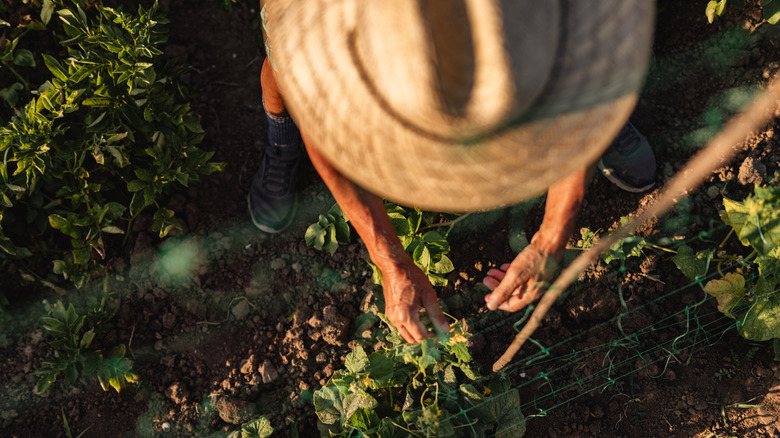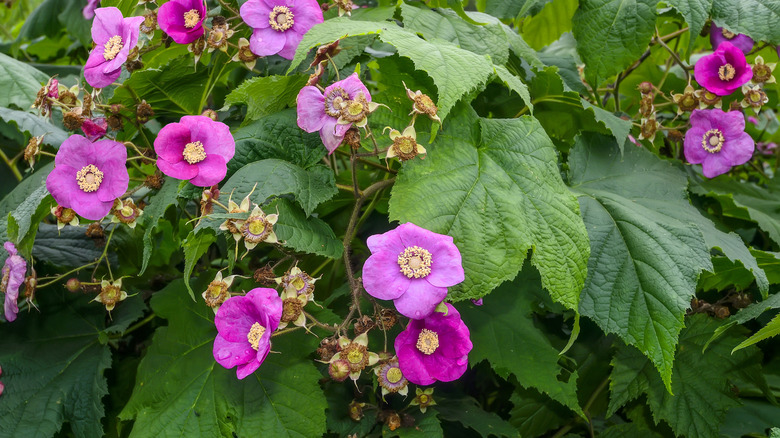The Fruit That Is Clearly Missing From Your Shade Garden
If you have a shady spot in your yard, it may feel like growing fragrant flowers or delicious fruit there is out of the question. While many fruit trees do grow best in full sun, your options aren't limited to trees alone. Instead, if you're struggling to navigate gardening and landscaping because of shade, there are many flowering plant options adapted to lower light exposure — including one eye-catching bush that can add color and produce edible fruit while growing a gorgeous, healthy shade garden. Purple flowering raspberry (Rubus odoratus) is in the rose family, although it may not look like it at first glance. At its maximum, you can expect this bush to grow up to 6 feet tall and 12 feet wide, making it perfect for creating a privacy nook. However, that's not the most exciting part of this plant.
Purple flowering raspberries also bloom with eye-catching pink or purple blooms that eventually form edible fruits — though they're more ornamental, and aren't regarded as very tasty. It is still technically safe to eat, however, which makes this a safer pick for gardeners worried about curious pets and children. Purple flowering raspberry is native to much of eastern North America and because it can grow in partial shade, it's a great way to add interest to the less sunny parts of your yard.
How to grow purple flowering raspberry in your shade garden
Purple flowering raspberry is relatively easy to grow thanks to its tolerance for different light levels and soil types, but it does best in soil that is well-draining. This show-stopping bush is hardy in USDA zones 3 through 7. While you can grow it in a variety of soils, it's best to avoid dense, clay-based soil, as the purple flowering raspberry thrives better in looser soils like loam and sand.
This shrub blooms in June, July, and August, so you can enjoy its delicate flowers all summer. In some regions, you even be able to observe fragrant flowers as early as April. These flowers aren't just visually appealing; they're also beneficial, bringing more pollinators into your yard and garden, along with other wildlife. Butterflies flock to the flowers for their nectar, and native bees will rely on the purple flowering raspberry for nesting material. You may even be able to attract more songbirds to your garden thanks to the fruit this plant produces. As a result, it's a great option if you want to start a pollinator garden.
If you wish to prune your purple flowering raspberry shrub, then the best time to do so is right after it fruits. As with all plants, ensure you're using sanitized shears and aim for parts of the plant that are diseased or damaged. Before adding this plant to your yard, it's important to know that it does produce suckers. Over-pruning can lead to more aggressive suckering, so use a careful hand when trimming your plant.

